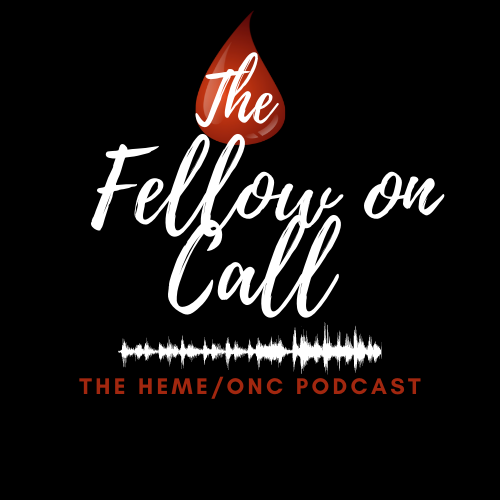Episode 130: Testicular Cancer Series, Pt 4 - Role of Radiation Oncology
This week, we welcome Dr. Amar Kishan to our show to discuss the role of radiation oncology in the management of patients with testicular cancer. As our listeners know by now, the management of patients with testicular cancer spans multiple specialities. We always appreciate hearing from our colleagues about their perspective.
Basically, what information can we ensure we get over to the radiation oncologist office ahead of the patient’s appointment?
Pre-Treatment Information (ASAP):
Key Imaging: CT imaging from the initial staging workup, especially crucial for seminoma.
Tumor Markers: Beta-hCG, LDH, and AFP levels.
Fertility Discussion: Documentation of any prior fertility discussions or concerns.
How has the role of radiation therapy in managing early-stage seminoma evolved with the advent of alternative treatments such as active surveillance and chemotherapy?
Stage I Seminoma:
Evolution of Radiation Therapy:
Historically, radiation was primary due to radiosensitivity.
Concerns about long-term morbidity led to a shift towards reducing radiation intensity and active surveillance.
Radiation fields evolved from "dog leg" to dose-reduced, and now typically to the para-aortic (PA) field only.
Modern Radiation Treatment Course (Stage I):
Typically, PA field (T11/T12 to L5/S1 interspace) treated with 20 Gray in 10 fractions (2 weeks).
"Dog leg" field considered for patients with prior pelvic surgery.
Generally well-tolerated; side effects include nausea/vomiting (prophylactic antiemetics), fatigue, and potential diarrhea.
Preferred Approach: Active surveillance is now the preferred approach for most stage 1 seminoma patients.
Risk Stratification: Nomograms are being used to identify patients that may benefit from adjuvant treatment.
In cases of stage II seminoma, we previously discussed a 2015 meta-analysis published in Annals of Oncology which included 13 studies comparing chemotherapy to radiotherapy in which they found improved relapse rates for patients with nodes >2cm with chemotherapy over radiation. But in stage IIA, how do you think about the role of radiation?
Role of Radiation (Stage IIA):
NCCN guidelines consider radiotherapy a reasonable option for stage 2A (nodes ≤ 2 cm).
For stage 2B (nodes <3cm) radiation is still a consideration, particularly in Europe.
Modern radiation involves the "dog leg" field (PA strip and ipsilateral hemi-pelvis) to 20 Gray, with a boost to visible nodes: 10 Gray for 2A (total 30 Gray), 16 Gray for 2B (total 36 Gray).
Acknowledging the 2015 meta analysis, but pointing out limitations of that study.
What are the potential impacts of radiotherapy on spermatogenesis? What about things like erectile dysfunction?
Spermatogenesis:
Spermatogonia are highly radiosensitive.
Doses as low as 0.15 Gray can cause temporary impairment; 4 Gray can lead to permanent sterility.
Sperm banking is recommended before treatment.
Testicular shielding is used to minimize dose to the remaining testicle.
Contraception should be used for 6-12 months post treatment.
Erectile Dysfunction (ED):
ED is generally considered vascular-mediated.
Doses used for seminoma are much lower than those for prostate cancer, with minimal dose reaching neurovascular bundles; ED is not a typical concern.
Testosterone production:
Leydig cells are considered radioresistant, so hypogonadism is not typically expected.
What are long-term effects to look out for?
Secondary Malignancies:
Elevated risk within the irradiated field (different histology, 5-15 year interval).
Risk estimated at 2-7%.
Cardiovascular Toxicity:
Potential for increased risk, but data is largely from older treatment protocols.
Cardiovascular toxicity is thought to be related to incidental radiation to the pancreas and renal hilum, potentially leading to diabetes and hypertension.
Preventative health measures and monitoring are essential.
What is the role of proton therapy in testicular cancer management?
Role in Testicular Cancer:
Theoretically, proton therapy could minimize dose to surrounding structures.
In silico studies show better dose distributions than photon therapy.
Clinical trials performed in prostate cancer (since we will never have enough data on testicular cancer given it’s rarity) have not shown significant differences in toxicity.
Randomized trials for seminoma are unlikely due to its rarity.
Standard radiation is generally adequate.
What are emerging therapies in testicular cancer?
Combination Therapy:
Carboplatin chemotherapy followed by reduced-dose, reduced-field radiotherapy for stage 2.
SAKK 01/10 trial, SAKK 18 trial, and EDEN trial are evaluating combination therapies and reduced radiation doses.
Surgical Trials:
SEMS and PRIMETEST trials explored surgical resection of retroperitoneal nodes.
About our guest:
Dr. Amar Kishan, MD, is a Professor and Executive Vice Chair in the Department of Radiation Oncology and the David Geffen School of Medicine at UCLA and the UCLA Jonsson Comprehensive Cancer Center. He graduated from the University of California, Berkeley with dual Bachelor of Arts degrees in Molecular and Cell Biology and Public Health. He earned his medical degree from Harvard Medical School, where he graduated magna cum laude from the joint Harvard-MIT Health Sciences and Technology Program. During medical school, he was awarded a Howard Hughes Medical Institute Fellowship to study tumor metabolism in the laboratory. He subsequently completed his internship training at Scripps Mercy Hospital in San Diego, where he was recognized as the H.H. Jones Intern of the Year. He then completed his residency training in radiation oncology at UCLA in 2017.
The crew behind the magic:
Show outline: Ronak Mistry
Production and hosts: Ronak Mistry, Vivek Patel, Dan Hausrath
Editing: Resonate Recordings
Shownotes: Ronak Mistry
Social media management: Ronak Mistry
We are proud to partner with HemOnc.org!
Want to learn more about the trials that lead to the regimens discussed today? What about dosing schedules? See links in the show notes for a link to HemOnc.org
Have some extra time and want to make some extra money? Click here to get paid to participate in market research surveys!

